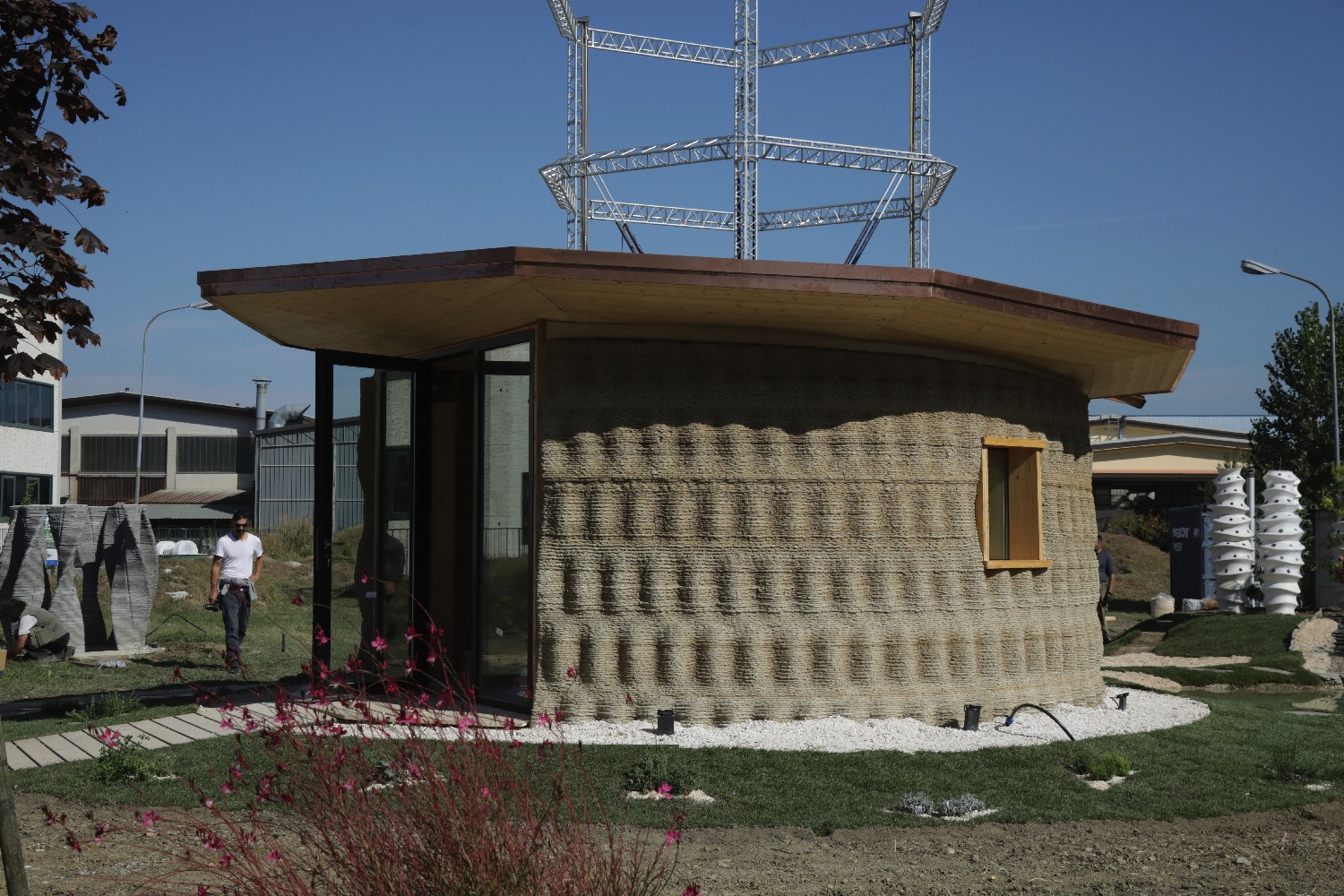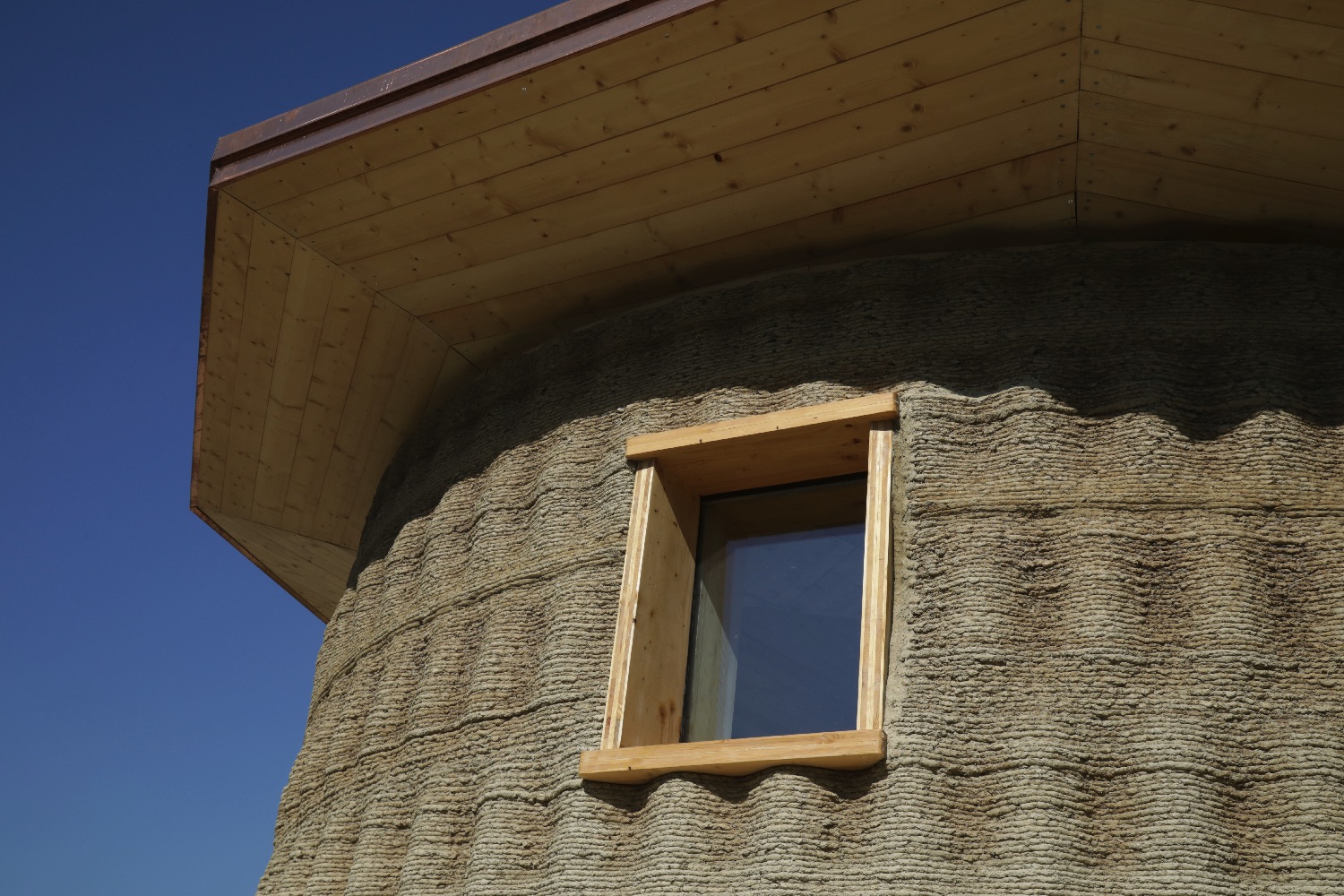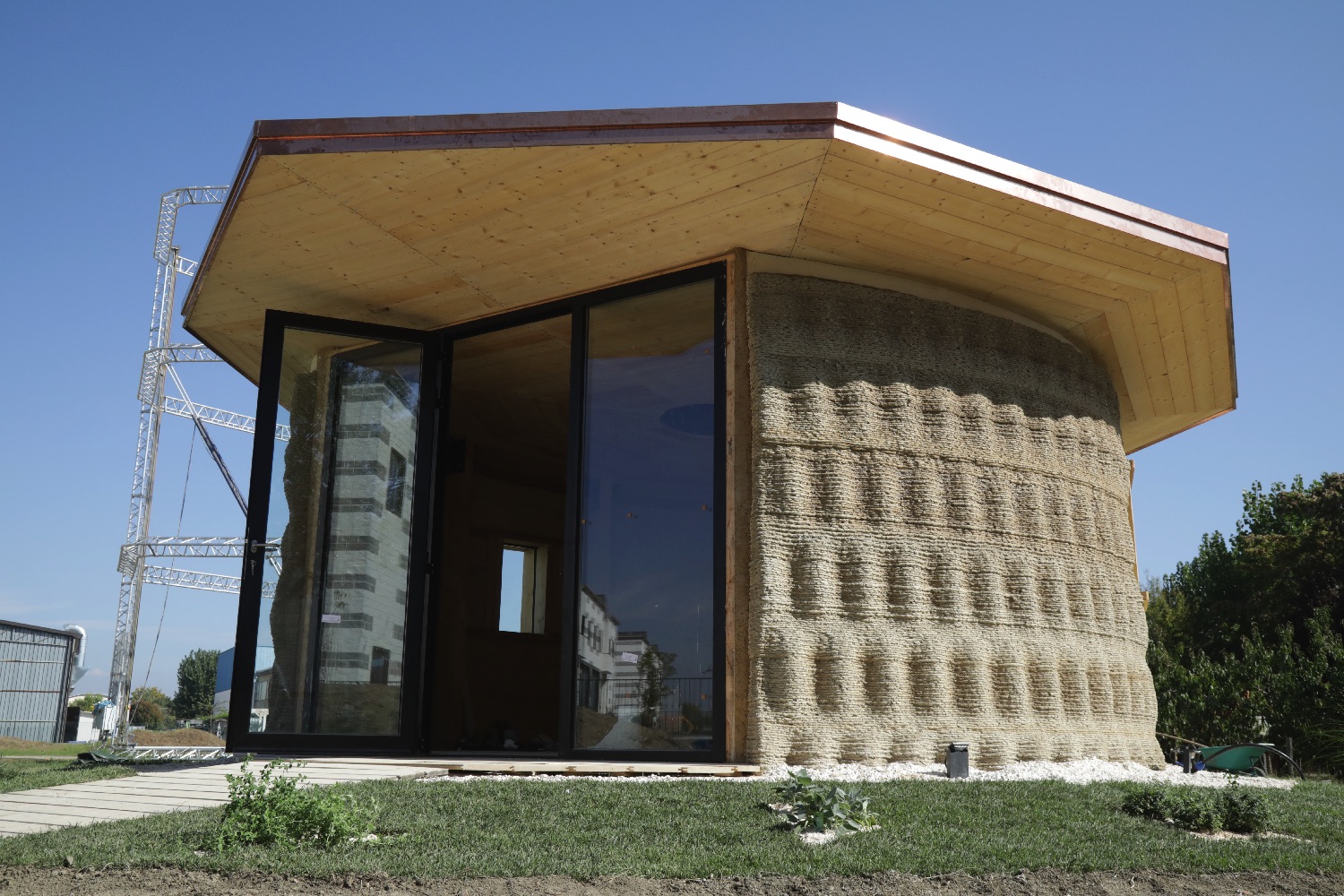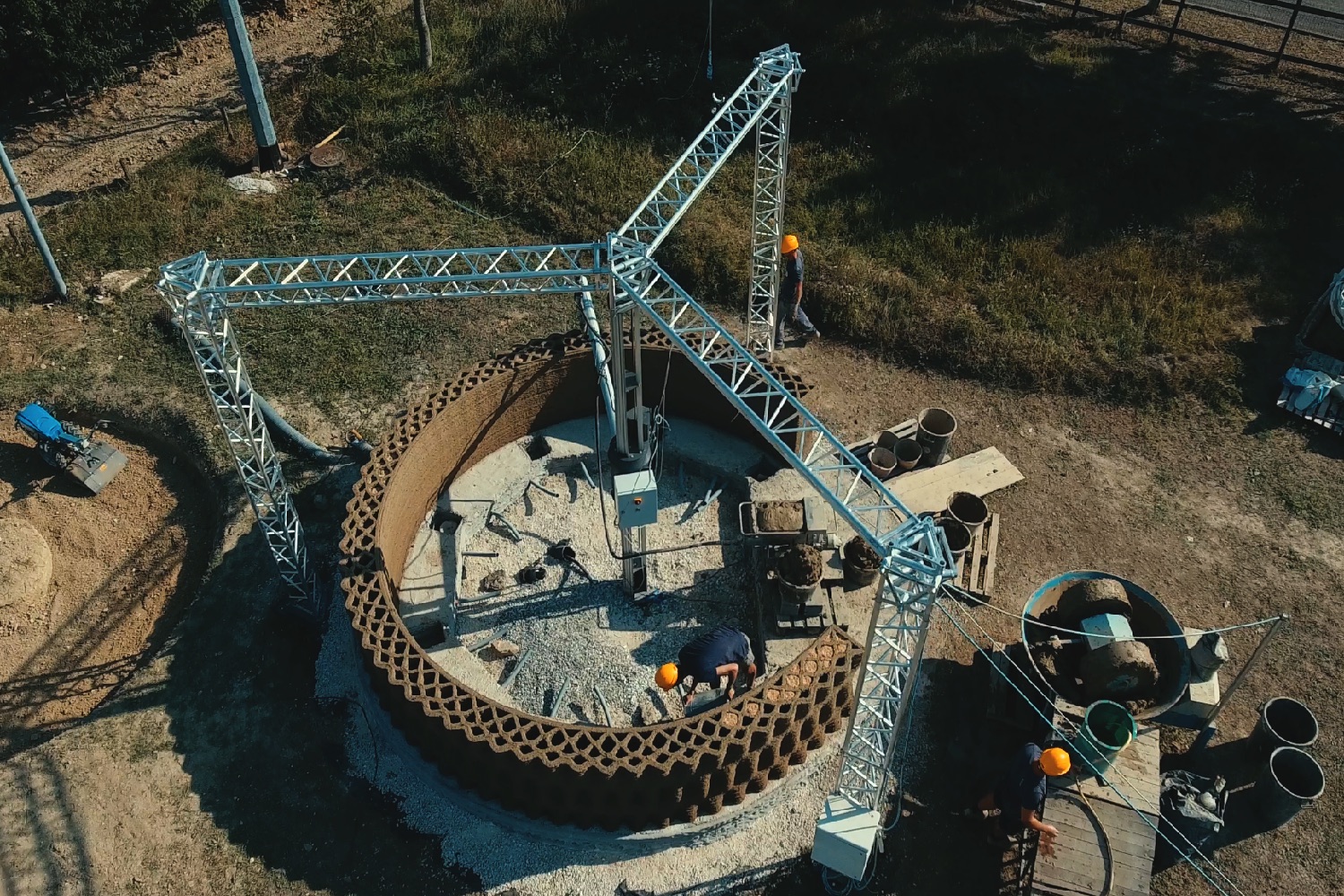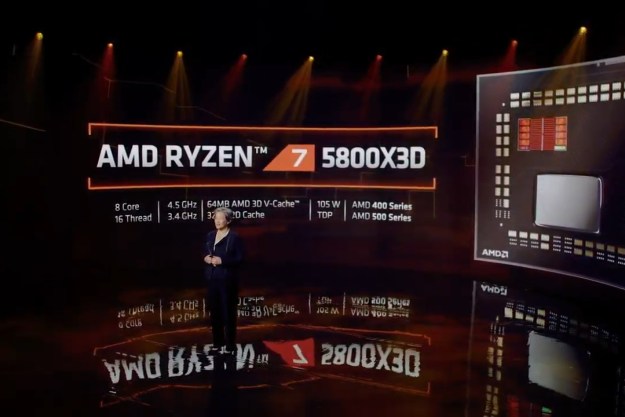Regardless of where you live, houses are pretty expensive these days. That could change if the Italian 3D-printing company WASP (World’s Advanced Saving Project) has anything to say about it. The startup has just 3D printed a hut structure, called Gaia, using a combination of 3D-printed concrete and a mud-based material. And, of course, its giant, crane-based 3D printer. Total cost of the build? Around $1,000.
“The material consists of clay earth, rice straw, and rice husk,” Massimo Moretti, CEO of WASP, told Digital Trends. “The natural fibers allow [us to minimize] the shrinkage of the dry mixture and confer mechanical strength to the layered wall. By using the wet pan mill, the raw mixture has reached an interesting homogeneous plasticity that permits a good resolution in printed texture.”
In addition to the earth-and-rice-based material, concrete is used for the building foundations, while the roof is made of timber. The 215-square-foot build took around 10 days to complete, although more time would be required to furnish the place. It is also guaranteed that the cost would creep up north of the $1,000 price tag for a commercial build, since this only includes material costs and not labor.
“Gaia represents an example of reduced costs, especially if compared on the thermal performances that usually are obtained only with different traditional systems,” Moretti continued. According to WASP, Gaia does not require heating or air conditioning, and is able to maintain consistent temperatures indoors regardless of what time of year it is.
“At the moment, the company is evaluating every possibility to enter the construction market,” he said. “Probably the most reliable strategy will be a construction service, with our team involved in the wall construction.”
WASP isn’t the only group working in this area. Scientists from Estonia’s University of Tartu and the Estonian University of Life Sciences have developed a 3D-printable, concrete-style building material from milled peat, oil shale ash, and silica nanoparticles. Like Gaia, this material also promises to greatly reduce the cost of building new houses.
Still, if there’s anyplace where it’s good to have as many competitive products as possible in the mix, it’s building homes, quickly and cheaply, to house the world’s growing population.
Editors' Recommendations
- Nvidia turns simple text prompts into game-ready 3D models
- AMD is bringing 3D V-Cache back to Ryzen 7000 — but there’s a twist
- AMD Ryzen 7 5800X3D beats predecessor, but AMD promised more
- AMD teases performance of its revolutionary 3D V-cache chip
- Fighting football injuries with 3D-printed, hyper-personalized pads
